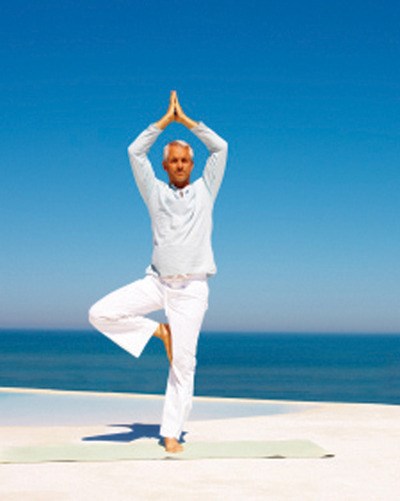The ‘tree pose’ — a.k.a. Vrksasana — is a yoga move that helps improve balance and flexibility, while also encouraging you to lighten up a bit.
But you need to remember this when you’re losing your balance in the pose: trees have roots. A tree grows both upwards and downwards from the ground, creating a supportive base to grow. In tree pose, a yogi creates the supportive base by mimicking the trunk of the tree with the lower body.
Without the underground mirror image effect, a person — unlike a tree — relies on contact between the four corners of the foot to stabilize the rest of the body. The four corners are positioned behind the big toe pad, behind the baby toe pad, and on the left and right side of the heel. Balance is achieved by maintaining equal pressure between the four corners and the ground.
Just as there’s an endless variety of trees, you’ll encounter several interpretations of tree pose varying across styles of yoga and teachers.
But the components that remain constant throughout all variations are that tree pose is a balancing pose that works to increase flexibility in the hips and strengthen both the main muscles of the lower body and the balance supporting muscles across the entire body.
Usually, the raised leg is pressed into the balancing leg in tree pose via the bottom of the raised foot. Another variation, however, is the raised leg is bent and crossed in front of the balancing leg — pushing into the thigh with the outside of the raised foot. The main difference between these variations is the intensity of stretch in the hip joint of the raised leg. In both variations, the knee of the raised leg should be moving behind you to open up that hip, but crossing in front intensifies the sensation.
The palms of the hands can be pressed together at chest level, extended in front with straight arms or extended above the head with straight arms. The difference is balancing becomes more difficult as the arms move further away from the body and point of contact with the ground. Your gaze remains soft at a point about four feet in front of you. For a greater challenge, try closing your eyes while palms are pressed together with straight arms overhead. But remember: be patient with the outcome.
Jamie Schaab for FitnessGoop.com



